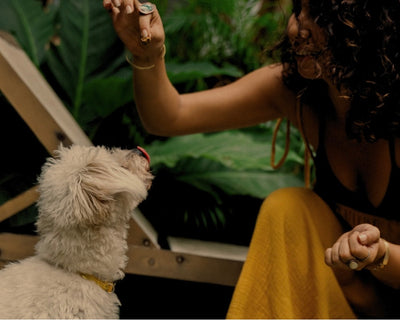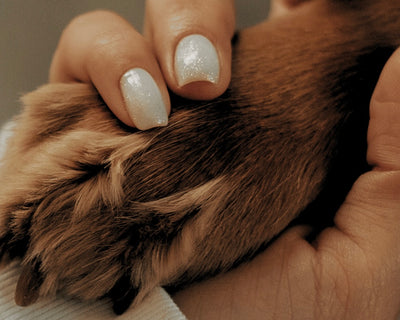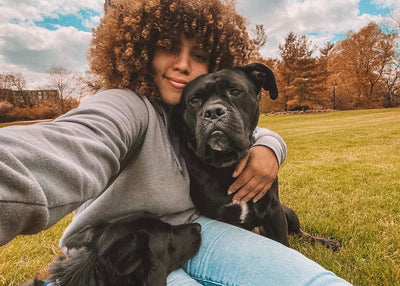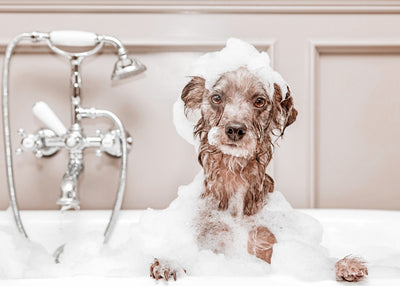Spaying & Neutering Littermates: What to Expect With Double Dogs

This blog post contains affiliate links. This means I may earn a small commission at no additional cost to you should you choose to make a purchase using my link. I love all of these companies and you will too!
So by now, most dog moms know the importance of spaying/neutering their pets. But if you are new to this dog mom lifestyle thing, then check out this great article by the ASPCA about the benefits of spay/neutering here.
As a seasoned dog mom, I was pretty confident when it came to getting the chiggys’ surgeries scheduled. I didn’t even think twice when working with the rescue to have both dogs scheduled for the same day. I knew it could potentially end up being a hot mess having both dogs recovering at the same time. But I figured if I rolled up my sleeves and did a bit of prep work, we’d be okay.
And two weeks later, I’m glad to say both Dylan and Delilah recovered really well and I didn’t even have to raid the liquor cabinet. So in today’s post, I’m going to share with you how I prepared to handle littermate surgery recovery for the twins WITHOUT having to keep them completely separated from each other.

Spay/Neutering Basics
This blog post is in no way designed to provide veterinary advice. I am simply sharing with all of you my experience with these surgeries and I how cared for my dogs afterwards. My story is in no way a substitute for fully discussing the timing, pre-op and post-op care of your pet with your veterinarian.
For brand new dog moms, outside of the price of the surgery (which varies a bit by region and circumstances — for example I did not pay for either operation for the chiggys as the rescue covered those costs as part of the adoption process) the next big question is when should you have your dog spayed/neutered.
Again I tell you to defer to the advice of your veterinarian, rescue and/or breeder, but in general most pet parents opt to have their puppy undergo the procedure at between 7 to 12 months old.
In my case, due to the adoption contract I signed, I was required to have the puppies spayed/neutered by 7 months of age. But as a side note, in most cases when you adopt from a rescue or shelter your puppy will already have underwent this surgery. In our case, the chiggys were not at the rescue very long before I found them and so I got to go through the puppy shot series and the spay/neuter process with them.
Prior to the surgery, your vet will give you instructions on when your dog is to be served his last meal on the evening before (depending on the time of his surgery the next day) and whether your pet will be spending a couple of nights at the vet’s. Some veterinarians allow your dog to spend the night before surgery with them; especially if the surgery is scheduled for super early in the morning. And it’s also common for dogs to spend the night after surgery with the vet as well; just to monitor for any complications.
In my case, none of my dogs — past or present — ever spent the night before or after at the vet’s. I dropped them off bright and early each time and then picked up doped up doggos in the afternoon.
Puppy Nurse Supplies
To make my life extremely easy, I made sure that I had stocked up on all the supplies I knew I would need prior to dropping the chiggys off at the vet. After all this wasn’t my first rodeo. So here’s my go to list of spay/neutering supplies.
Car Carrier/ Dog Booster Seat/ Dog Seat Belt
Being that most of my dogs have been of the toy variety, I always keep dog booster seats handy. I personally prefer the ones which allow these smaller breeds to see out the windows. I find that over time my tiny kids seem to be more calm traveling by car when they can see what is going on.
However, if you have a larger dog, I would recommend obtaining a dog seatbelt as well as a backseat cover. Your fur kid is likely going to be all out of sorts and a bit nervous when leaving the vet’s office. So knowing they are safely secured in the booster seat, carrier or seatbelt will make the ride home much easier.
Also, don’t make have your dog use these devices for the first time on the way home from the vet. Make sure you have put them into the practice of riding secured in the car enough times so they are no longer uncomfortable. You don’t want your pet flipping out in the backseat while you are driving, getting twisted between the fastening straps — especially if you will be picking them up solo.
Car Blankets
One of the ways that I help my dogs to get comfortable with their car booster seats is by placing super soft blankets inside them. I also make sure the blankets are clean but smell like their sleeping areas. In my case, I crate train the chiggys at night. So I placed the clean car blankets on top of their crates the day before the surgery. This way when I placed the puppies in their own booster seats after surgery, the seats smelled familiar and they both went right to sleep in the car.
Dog Harness
This one is optional but especially with toy breeds I do not believe in fastening leashes or seatbelts to neck collars. I feel like if there is a car accident or I have to pull on the leash firmly, the neck of a toy breed is too fragile. So I always fasten my dogs to their booster seats by means of a harness. Dog collars in my house are strictly a fashion statement lol.
Dog Crate
This one is also optional as I know some dog moms are strictly against crate training; which I totally get. As a matter of fact, once my dogs are house broken, crates are broken down and they all graduate to big boy and girl beds. But right now, the Pee Pad Missing King (Dylan) and Miss I’ll Squat Where I Wanna (Delilah) are still figuring things out.
So they are crate trained at night only. Post surgery, the crates serve double duty. They keep the dogs in a safe space and they prevent accidents. However, I still only used the crates at night after surgery.
I also stuff my dog crates with ultra comfy pet donut beds and I cover them with blankets at night. I’m pretty sure this helps to create the safe den feel for the chiggys as they promptly go to sleep every night (surgery or no surgery) without even the tiniest fuss.
Dylan and Delilah each have their own crate; which is really important post surgery. You don’t want any fights or rough play for 7-10 days after surgery as they can reopen their incisions.
*As a super secret dog mom crate tip: you can help your dog feel even more comfortable in their crate by throwing a piece of your clothing in with them. I usually throw a t-shirt in between the chiggys’ crates so that they can have the comfort of my smell when they sleep. I’ve done this with all my dogs and it seems to work really well.
Soft Dog Surgery Collar Cones
Who wants to come home from surgery and walk around with a stiff plastic shield all day and night? No one that’s who. So I picked up a couple of super soft surgery collars from Amazon for each puppy. The cones do the same job of making sure the dogs don’t mess with their incision but they are super comfy for them and super amusing for me. (I mean honestly could Dylan BE any cuter with his little froggy cone?)

Cozy Snoods/ Doggy Jumpers
Now if you follow me on Instagram then you know that I am a huge fan of doggy jumpers. For whatever reason, every dog I have ever owned always acts more calm and subdued when I put them in a jumper or a sweater.
In the chiggys’ case, I purchased doggy jumpers specifically designed for iggys. Since the twins are tiny and lean like iggys, these cozy jump suits helped to keep them cozy and calm during recovery. And between their fuzzy cones and snoods, there was no way they were going to get to those incisions.
Bland Dog Food
One rather common complication after surgery is for the medication to upset your dog’s tummy. So it’s a good idea to consult with your vet beforehand about possibly putting your dog on a bland diet for a few days.
But remember, you always want to gradually ween your dog on and off of different food types/brand, as the act of switching food can lead to gastrointestinal issues.
Puzzle Toys/ Long Chew Treats
By day 3 or 4, your dog may start to get a little antsy. It’s a good idea to have some puzzle treat toys or chew treats on hand to keep your dog busy and stationary during the “No Play.”
So that’s my list. With all of these supplies on hand, the twins came through their surgery recovery with flying colors. And the only time they were separated from each other was at night when they slept in their kennels. But for now, their sleeping conditions are business as usual.
My last tip is that for some dogs, all of the above will not be enough to keep them calm post surgery. So if that is the case with your dog, be sure to discuss that with your veterinarian. There are medications you can give your dog for a few days to help them relax while they recover.
Whelp, I hope this post was helpful! Happy spay/neutering to you and your pup!





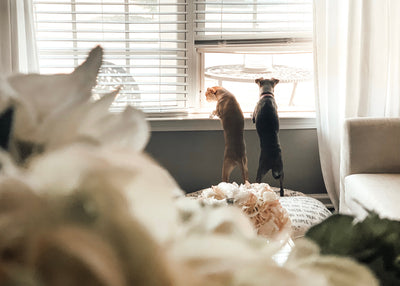
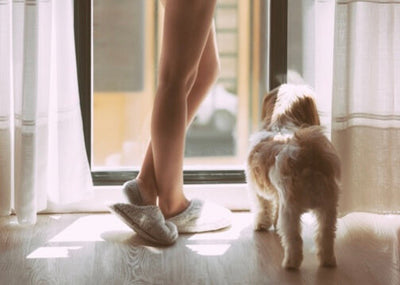
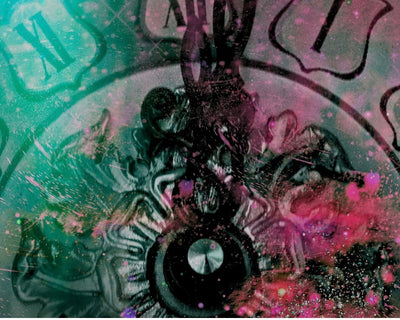
![This Ole Dog [The Pet Parenting Guide to Healthy Living for Senior Dogs]](http://lindseyandcoco.com/cdn/shop/articles/Coco_and_Paris_400x.jpg?v=1603583774)
